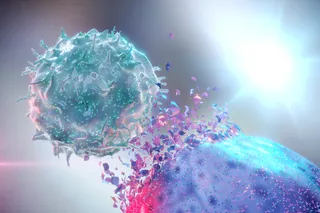I contain multitudes—literally—and so do you. A hundred trillion bacteria, viruses, and other microbes, collectively known as the human microbiome, live on and inside our bodies. Last year, scientists working on two major collaborative projects produced the most comprehensive census so far of this inner world.
Many common diseases may be influenced by the microbiome, because microbes control many of the body's essential chemical processes: They predigest our food, chemically modify the pills we take, shape our immune system responses, and repel infectious invaders. Everyone's microbiome is unique, which may help explain why a certain drug helps one person but hurts another, why chronic conditions like inflammatory bowel disease suddenly flare up and then die down, and even why some individuals suffer from asthma or cancer.
In the last four years, the U.S.-based Human Microbiome Project used genomic analysis to identify bacteria, viruses, fungi, archaea, and protozoa in the noses, ...















